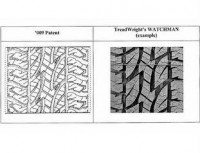Michelin reports higher volumes, lower sales in Q1 2014
During the first quarter of the 2014 fiscal year, Michelin experienced a 3.4 per cent rise in volumes, with fast original equipment segment momentum and growth in the truck tyre business, while weak mining tyre sales were offset by growth in aviation and two-wheel tyre business within the specialty tyre segment. This increase in volumes did not translate to higher net sales, however.
Overall Michelin Group sales declined 2.4 per cent year-on-year in the January to March period, with passenger and light truck tyre sales (and related distribution) decreasing 2.4 per cent to €2.52 billion, truck tyre sales (and related distribution) declining 1.0 per cent to €1.46 billion and specialty business net sales dropping 5.2 per cent to €775 million. Overall first quarter 2014 net sales amounted to €4.76 billion. A slightly negative price mix was encountered during the quarter and Michelin attributes a strong euro for a 4.6 per cent negative currency effect.
Consumer tyres
Demand for original equipment passenger car and light truck tyres climbed six per cent in Europe during the first quarter of the year due to increased production by broadline carmakers. Markets in Eastern Europe fell six per cent year-on-year due to the economic slowdown in Russia and political instability in Ukraine. The North American market gained five per cent over the period as buyers continued to replace aging cars. In Asia (excluding India), demand rose eight per cent overall but growth varied by market. It remained very robust in China, at 12 per cent, but faltered in Southeast Asia, where demand dropped nine per cent due to the political situation in Thailand. The Japanese market surged substantially, driven by purchases ahead of the 1 April increase in VAT. The South American market retreated eight per cent overall in the first quarter, in a mixed economic environment shaped, in Brazil, by the fall-off in vehicle exports and the planned increase in the IPI excise tax.
Replacement passenger car and light truck tyre demand rose four per cent in Europe during the quarter; it increased seven per cent in Western Europe off of the historic lows observed in first-quarter of 2013, Sell-out rebounded in March and Michelin reports that dealer inventories have returned to “normal levels”. The Eastern European market contracted eight per cent, again due to the political and economic situations in Russia and Ukraine. The seven per cent growth in the North American market reflected higher imports, sustained demand, particularly in Canada, and the competitive environment, especially in the mid-market. In Asia (excluding India), demand rose 11 per cent overall. The market grew by 11 per cent in China, supported by demand for mobility and the decline in savings rates, and 21 per cent in Japan, lifted by purchases ahead of the higher VAT rate and the harsh winter weather. Demand in South America increased six per cent, led by markets in Brazil, Colombia and Argentina.
Truck tyres
In Western Europe, demand for original equipment truck tyres rose eight per cent, reflecting registrations of trucks purchased ahead of the application of Euro VI emissions standards on 1 January 2014. This growth was countered by a year-on-year drop of 40 per cent in Eastern European markets. The North American market climbed six per cent, with an improved mix thanks to the faster growth in the Class 8 segment. Radial and cross-ply tyre demand in Asia (excluding India) rose 11 per cent overall, with a 13 per cent increase in China. In Southeast Asia, the situation in Thailand and other factors pushed demand down 12 per cent. In South America, the market continued to trend upwards, gaining ten per cent, and the higher interest rates on FINAME subsidised financing in Brazil has not yet dampened demand for new trucks.
Replacement truck tyre markets rose nine per cent overall in Europe. The 16 per cent growth in Western Europe reflected a technical upturn off of weak prior-year comparatives and the relative dealer restocking early in the year. In Eastern Europe, current economic and political conditions are dragging the replacement market down at an increasingly fast pace as the months go by. In North America, the market rose eight per cent over the period, with a noticeable contribution from the imported tire segment. Freight demand remains robust in a stronger economy. Asian radial and cross-ply tyre markets (excluding India) rose by four per cent overall. In China, demand was up one per cent for the period, with truckers showing some hesitation in the face of the slight cooling in the domestic economy. While stable for the period, Southeast Asian markets remain driven by the steady shift to radial technology. The Japanese market gained new momentum, climbing 47 per cent ahead of the increase in the VAT rate. In South America, radial and cross-ply markets grew four per cent overall, with sustained demand for import tyres.
Specialty tyres
Earthmover tyres: The mining industry grew as a whole in the first quarter, but the mining tyre market remained on the downward trend observed in the final quarter of 2013, dampened by inventory drawdowns by mining companies. Original equipment demand recovered in mature markets, boosted by increased earthmover production at a time of low manufacturer inventory. Demand for tyres used in infrastructure and quarries rebounded slightly in mature markets, thanks to dealer optimism, but declined in emerging markets.
Agricultural tyres: Global demand for original equipment tyres softened in mature markets due to the decline in farm machinery sales. The replacement market is recovering in Europe, but remains down in North America.
Two-wheel tyres: The motorcycle market rose in Europe but declined in North America, where it suffered from unfavourable weather conditions.
Aircraft tyres: The commercial aviation tyre market expanded over the quarter, while defence markets contracted.
Full-year 2014 outlook
With demand for tyres rising as fast as expected in the first quarter of 2014, except in Eastern Europe, Michelin maintains its objective of around a three per cent increase in volumes over the full year. The company aims to improve its gross unit margin, while preserving a positive balance between pricing policy and raw materials costs. Michelin reports that its competitiveness plan is “being deployed on schedule.”
Against this backdrop, Michelin confirms its 2014 objectives of an increase in operating income before non-recurring items (at constant exchange rates), a greater than 11 per cent return on capital employed, and structural free cash flow of more than €500 million along with a capital expenditure program maintained at around €2 billion.




Comments